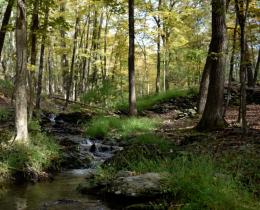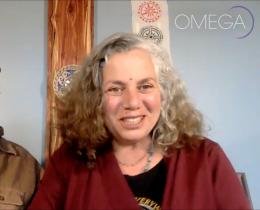Bob Berkebile encourages us to look to nature as our model for how to live sustainably in this interview by Omega CEO, Robert "Skip" Backus.
Skip: For more than 30 years, you have been a leader in the sustainable design movement, and helped introduce the Leadership in Energy and Environmental Design (LEED®) standard that has become the benchmark for green buildings in America. How can new standards in sustainable design help to restore the environmental, economic, and social vitality of communities?
Bob: LEED® was created as a voluntary educational tool for those who wanted to reach for higher levels of performance in the built environment, but, as it turned out, the industry was ripe for a new standard. When the United States Navy and the General Services Administration made it their standard for design and construction, others followed and it became a standard. I would argue that, by far, it has been the most transformative tool in the design and construction industry in my professional life.
Skip: You’ve been widely recognized for your leadership in the industry, including being listed as on of the top five role models for green and sustainable design by DesignIntelligence. Were you always passionate about the environment or was it something that evolved over time?
Bob: I always loved nature. My mom taught me about observing the subtle but powerful forces of nature, and I try to bring that to my work. I always look to nature to see how we can evolve and change the way we build. Once, one of our buildings partially collapsed. I spent an anxious night on the rescue team, wondering if somehow I had caused this catastrophe. It was an epiphany. I became aware of unintended consequences and the need to change the design and construction industry to support life. This still continues to fuel my desire for change.
Skip: Early on you studied with architect, engineer, and inventor Buckminster Fuller, a trailblazer in thinking globally and living sustainably. How did he influence your approach to architecture?
Bob: Bucky completely changed my worldview. He taught me systems thinking and that every decision I make as an architect has a positive or negative impact on “spaceship earth” and its passengers—with no exceptions. We talked a lot about change, and he said, “Bob, the only way to make significant change is to make the thing you are trying to change obsolete.” For example, I would argue that the iPhone made previous phones obsolete, but we have yet to create a building or community that so clearly renders everything before it obsolete.
Skip: What do you see as the next frontier in green building?
Bob: The Omega Center for Sustainable Living (OCSL) is closer to the goal of rendering every building before it obsolete than any other building out there, which places Omega at the cutting edge of sustainable design. Actually, I think of it not as sustainable design, but as regenerative design. It’s time for us to move beyond the idea that a building is green if it’s doing less damage to the environment than other buildings. We need to build buildings that add value to the environment. The OCSL proves it is possible to give back to nature—to be regenerative.
Skip: What was the greatest challenge your firm, BNIM, faced in designing the Omega Center for Sustainable Living?
Bob: The greatest challenge for BNIM, and for Omega, was breaking the powerful inertia of the standard way of thinking and doing things in the industry. If Thomas Jefferson were to return today to witness how things have changed in 200 years, he may not recognize the advances in technology, communication, or transportation, but he would still recognize the building industry. By building the OCSL according to the Living Building Challenge™ standards, we all had to change our thinking and believe the impossible was possible. We then needed to model that to the suppliers and craftsmen involved. It became a collaborative labor of love.
Skip: What do you say to those who argue green design is cost prohibitive?
Bob: I say that is a myth. The vast majority of high performance buildings actually cost less. The life cycle costs of well-designed buildings have been documented for two decades, and the results are very impressive; over time, operating costs decrease while human health and productivity increase. There are exceptions, and innovative projects often cost more. But, in terms of value, it’s becoming obvious that projects like the OCSL are creating a healthy excitement that is infecting the sustainability community and changing world views of what is possible. And that is worth more than anything if we want to change the way we live in the world.



